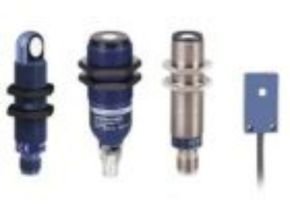Description Of Generators MarelliMotori
Generators are useful appliances that supply electrical power during a power outage and prevent discontinuity of daily activities or disruption of business operations. Generators are available in different electrical and physical configurations for use in different applications.

In the following sections, we will look at how a generator functions, the main components of a generator, and how a generator operates as a secondary source of electrical power in residential and industrial application.
How does a generator work?
An electric generator is a device that converts mechanical energy obtained from an external source into electrical energy as the output.
It is important to understand that a generator does not actually ‘create’ electrical energy. Instead, it uses the mechanical energy supplied to it to force the movement of electric charges present in the wire of its windings through an external electric circuit. This flow of electric charges constitutes the output electric current supplied by the generator. This mechanism can be understood by considering the generator to be analogous to a water pump, which causes the flow of water but does not actually ‘create’ the water flowing through it.
The modern-day generator works on the principle of electromagnetic induction discovered by Michael Faraday in 1831-32. Faraday discovered that the above flow of electric charges could be induced by moving an electrical conductor, such as a wire that contains electric charges, in a magnetic field. This movement creates a voltage difference between the two ends of the wire or electrical conductor, which in turn causes the electric charges to flow, thus generating electric current.
Technical Features
- SERIES: MJRM (Low Voltage) / MJHRM (Medium Voltage)
- POWER: Up to 12000 kVA
- VOLTAGE: Up to 15000 V
- FRAME: 315 – 1250
- POLES: 4 to 12
- FREQUENCY: 50/60 Hz or variable speed
- PROTECTION DEGREE (IP): 44 (up to 56 on request)
- COOLING METHOD (IC): 81W
- AMBIENT TEMPERATURE: 0°C to +60°C
- WATER TEMPERATURE: Up to 40°C
- AVR: E-Vo up to 630 frame; D-Vo Light above (Low Voltage) / D-Vo Light (Medium Voltage)
- BEARINGS: antifriction or sleeve (on request)
- APPLICATIONS: Auxiliary Generator, Shaft Generator, Hybrid Machine, Variable speed generator, Off-shore, PTO-PTI system
- STANDARDS: IEC 60034-1 – BS 4999-5000 – NEMA MG 1.32
- CERTIFICATIONS: Marine Survey Certificate
Main Options:
- Flanged shaft for direct coupling with engine flywheel (in case of single bearing solution)
- Reinforced construction for high linear vibrations
- Neutral point terminals in separate terminal box
- Raised feet to match engine baseframe dimensions (B20 – IM1101)
- Dedicated current transformer installed on neutral point (differential protection and measurement)
- Insulated bearing and earthing brush
- Excitation/overboosting PMG mounted on generator
- Arrangement for rotor earth fault protection 64R
- Arrangement for vibration sensors
Source: www.marellimotori.com
Read More Articels:
- Solinst Model 425 Discrete Interval Groundwater Samplers
- Adalet Quarter Turn Latch Terminal Enclosure
- Zadetector KP800 Portable Gas Sampling Pump
- Buschjost Series A3701-A3706/0504
- Bamo Venturi channel flow calculator BAMOPHOX 759




